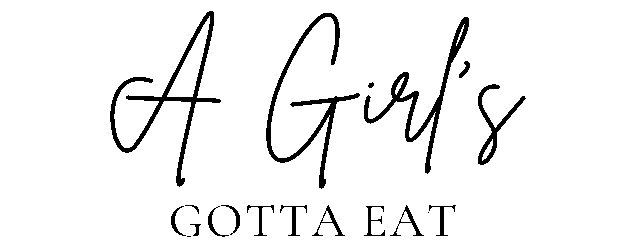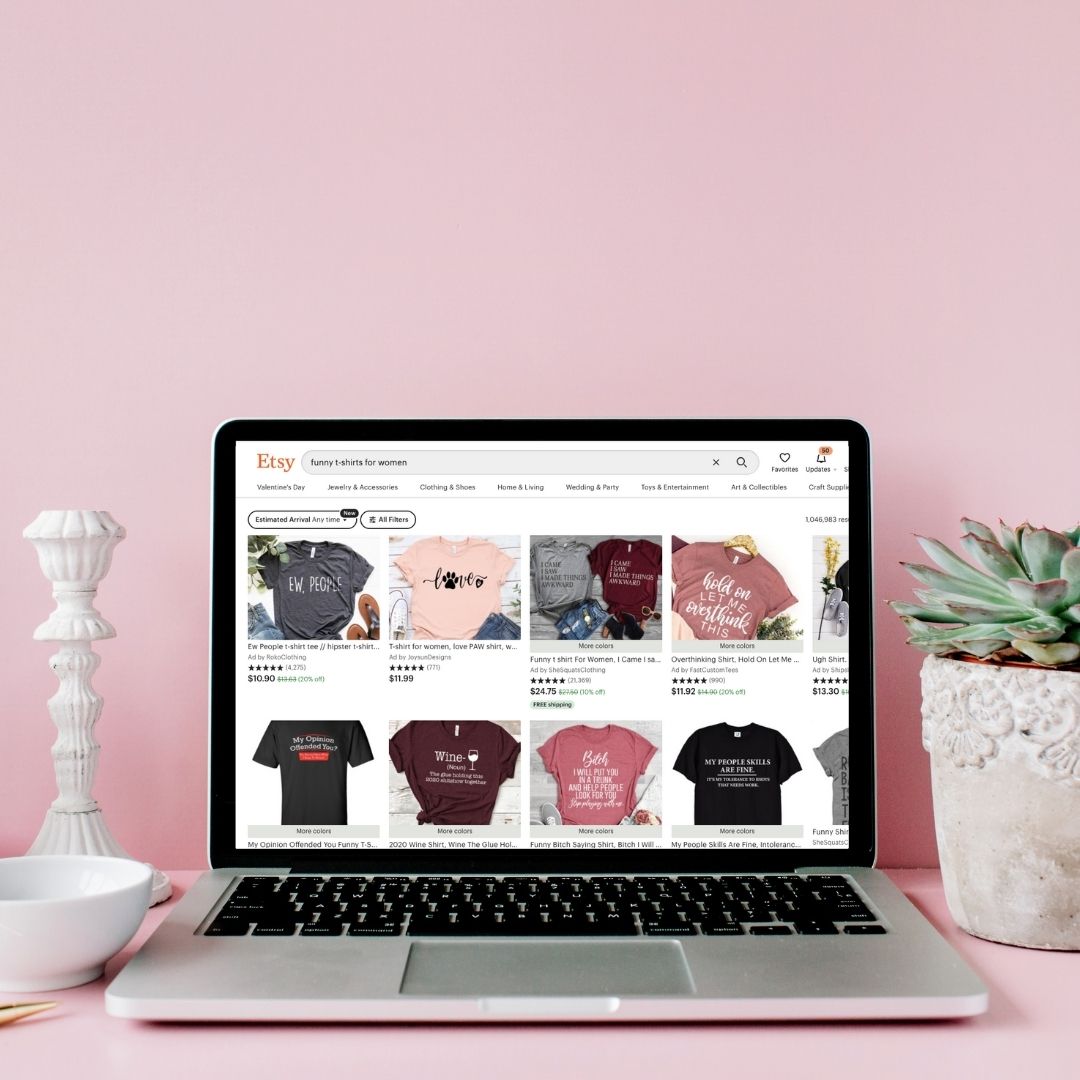Ready to Start Your Business or Side Hustle? You Need a Website First.

Having your own website is the first step toward making your business legitimate in the eyes of the internet. A good website will help potential customers find and follow you, help you build their trust with content and transparency, and therefore help your business thrive on the world wide web. Trying to sell a product or service without a website in 2019 is like trying to ford the river without any money in Oregon Trail. Congratulations, your oxen have died.
If you’ve never had a website of your very own before, it’s not nearly as intimidating to get it up and running as you might think. Below are my recommendations for a website hosting platform depending on what you plan to do with your business or side hustle.
FYI: This post contains some affiliate links.
The Best Platform for Writing a Blog
These are my website recommendations if you want to create a blog or portfolio to show off your work.
WordPress
WordPress is the most popular content management system on the internet. There are two options available: WordPress.com and WordPress.org.
The difference between the two is that with WordPress.com, you can go make a free account with WordPress and use them to host your website. Since it is free, your website URL will default to “yourwebsite.wordpress.com”. If you have your own domain name that you’ve purchased from somewhere like Bluehost or GoDaddy, you can direct it to your WordPress.com blog and advertise it with that URL instead.
The reason WordPress is the most popular content management system is that it allows the most flexibility and the ability to access and edit the code that makes everything happen. With the right themes, plugins, and widgets, your WordPress site can do just about anything you need it to do. As a result, there is a bit more of a learning curve with WordPress than other options, but it’s so worth it to learn because the options are virtually limitless. WPBeginner.com is a great tool for beginner users who want to maximize their time spent learning and get things set up quickly. I still reference that site when I am trying to figure out how to do something.
Ready to start your WordPress blog? Check out my quick tutorial on setting up a self-hosted WordPress site with Bluehost.
Squarespace
If you’re not ready to test your web development chops with WordPress, Squarespace might be more your style. With Squarespace, you pay a monthly fee which includes everything you need to build a site: a content management system, web hosting, design templates, e-commerce capabilities, and a domain if you need one. Prices are as follows:
Website Personal: $12/month
Website Business: $18/month
E-Commerce Basic: $26/month
E-Commerce Advanced: $40/month
For a blog, the personal plan should work fine in the beginning, and you can always upgrade depending on what you need. The downside to these standard plans is that you do not have access to the source code. Not so much of a big deal if you have no idea how coding works and just want to drag and drop boxes, but if you do want to work with the code you can pay extra for the developer’s version of Squarespace. This gives you permission to access and edit the source code for complete customization of your website.
I personally have not used Squarespace so I have no experience with it to draw from, but plenty of beautiful websites (like The Girlboss Foundation) are powered by Squarespace.
The Best Hosting For Your E-Commerce Website
Selling something? One of these should meet your needs.
Shopify
Shopify is an e-commerce platform that allows you to easily create a product-centered website. It can be used to sell anything – handmade crafts, items you drop ship or purchase wholesale, vintage clothing, food, your dirty socks, whatever you want to sell. Their dashboard makes it a breeze to manage your inventory, payments, and shipping, and the drag-and-drop dashboard allows you to rearrange different sections of your shop and get the look you want without messing with any code.
Shopify’s plans start at $29 per month for their basic plan (I use this plan) plus a 2.9% + $.30 credit card processing fee per online transaction. The other 2 plans cost $79 per month and $299 per month for the Advanced plan, which accommodate larger businesses and teams. All of these plans come with access to their app store, which contains thousands of free and paid apps to help you with marketing, security, customer support, and even finding print on demand products to sell.
Shopify has another plan that they like to keep hidden called Shopify Lite. This plan cost $9 per month but does not come with your own website builder. Instead, Shopify Lite is an option if you have an existing website on another platform (like WordPress) and want to start selling products on it. Shopify Lite allows you to create product listings that you can individually embed into your site’s posts or pages and sell your products through Shopify’s secure payment processing system. I used Shopify Lite briefly when I started selling products on Jane Dope, but ultimately scrapped it and created an Etsy shop instead.
I recommend Shopify if you already have experience selling on a marketplace like eBay, Etsy, or Amazon and want to grow your brand. The reason I think it’s important to have experience selling on a marketplace first is that with your own website, you have to work harder to find customers than you do through a marketplace website that already has a built-in audience. You’ll have to spend more time researching the right titles, tags, and descriptions to help people find you through Google, which means you need at least a basic understanding of search engine optimization (SEO). I learned SEO by writing blogs and selling on eBay in the early aughts, so I know the value of practicing on a marketplace from experience. You’ll waste a lot less time working on making the perfect website and more time getting to understand your audience. Once you’re ready to take your e-commerce business to the next level, Shopify is my preferred choice.
Etsy
Etsy is a bit different in that it’s a marketplace and not a website hosting platform, but I’m including it in this list for several reasons:
It’s a niche marketplace specifically for creators, so you can’t just slap anything you’d sell on eBay or Amazon (or even Shopify) up there. It’s the perfect starting point for makers who want to grow their business or see how well their products sell online.
Your Etsy shop is customizable enough to allow you to build a brand through Etsy.
You can use their built-in audience to find customers that will stick around wherever you go (if you know how to keep their attention… more on that in a later post).
To summarize, Etsy is an online marketplace for handmade items, vintage wares, and supplies. Think of it as an internet craft fair with 35 million active buyers. That’s one hell of an audience.
The benefits of starting with Etsy before your own website include the built-in audience, a front-end platform that is maintained and updated for you, and a user-friendly dashboard that makes it easy to list products and optimize your chances of showing up in searches through keywords, titles, and tags. You can view your stats over time to see what words people are searching to find you and what types of marketing converts to the most sales, and use that information to improve your SEO and market research as you grow.
Getting your products seen is HARD no matter what or where you’re selling. The eternal limits of the internet mean there is no cutoff to how many people can join you in trying to sell beaded bracelets or nature photography, so your competition will always be fierce. This is why I recommend getting in front of the millions of people who go to Etsy first when shopping online.
Etsy’s fees are higher per transaction than Shopify, but they do not have a monthly fee (unless you have Etsy Plus, which costs $10/month and comes with perks like advanced shop customization and advertising credits). Etsy’s fees come out to around 8% per transaction and the breakdown looks like this:
Listing fee: $.20 for a 4-month listing
Transaction fee: 5% on each purchase
Payment processing fee: 3% plus $.25 per transaction
Use my link to open a shop and we’ll both get 40 free listings.
As with any marketplace, the downside is that Etsy ultimately calls the shots and controls the variables. You are bound by their (reasonable, I might add) terms of use, they can cancel your account without notice if you violate their terms, they can change their search algorithms at any moment and bury your listing titles, the list goes on. The same applies for Amazon, eBay, Poshmark, and Facebook Marketplace. What would you do if all your eggs were in one basket and one bad business move on their part had a significant impact on your income? You’d probably be pissed, but slightly less pissed if you have your own website where you control all those variables. Don’t buy on rented land, but don’t be afraid to use it as a starting point.
Ready to start/grow your Etsy shop? Be sure to check out my post on Etsy SEO for 2019 and 20 digital products you can sell on Etsy for passive income.
WordPress/Woocommerce
Woocommerce is a free e-commerce platform that can be used to sell products and collect secure payments on your WordPress website. If you already have a WordPress site and have some products you’re ready to list, Woocommerce is a great option because you can seamlessly build on your existing site without much, if any, of a learning curve.
If you’re unfamiliar with WordPress, Woocommerce will have the steepest learning curve of any selling platforms on this list. However, what you can do with it compared to everything else is virtually limitless. Unlike Shopify, there is no monthly fee to use it. All you have to pay for is the cost of your hosting and domain.
The Best Platforms for a Temporary Landing Page/Sales Page/Coming Soon Page
Landing pages are single web pages often used to build hype and attract potential customers before the launch of your website. If your site isn’t ready to launch but you’re eager to get the word out, you can use a landing page for plenty of promotional purposes:
Collect email subscribers before you launch your website or product
Create a single high-converting sales page for a digital product like an
No matter what platform you’re using for your website, the following landing page programs can help you get one up and running in minutes:
Leadpages
Leadpages is arguably the most popular landing page and sales page creator. Its drag-and-drop editor is super simple to work with and it’s compatible with both WordPress and non-Wordpress websites. They offer a 14-day free trial and plans start at $25 per month.
Under Construction Plugin for WordPress
This plugin can be installed from your WordPress plugin directory. It takes minutes to install and can be used as an under construction/coming soon page that encourages people to sign up for your desired call to action. Check out their website for examples of the kinds of pages you can make.
Google Sites
Google Sites is a free app that comes with any Google account. The options are minimal and you’re not going to guarantee the kind of site you’d get with, say, WordPress, but it’s free and you can get a front page to collect emails up in minutes. Zapier has an excellent tutorial that goes over the many ways it can be used. Companies have used it for everything from sharing documents to selling digital products. Not bad for a free site, although it will display as yourdomain.google.com. Custom domains are available for an extra $5.
I hope this encourages you to take the first step in starting a website for your business or side hustle! Feel free to reach out in the comments with questions, to share your experience with these platforms (positive or negative, let’s keep it real), or to let me know what else you’d like to see on A Girl’s Gotta Eat.







Thanks for the interesting article. I also started with Google Sites and ended up with WordPress and WooCommerce.